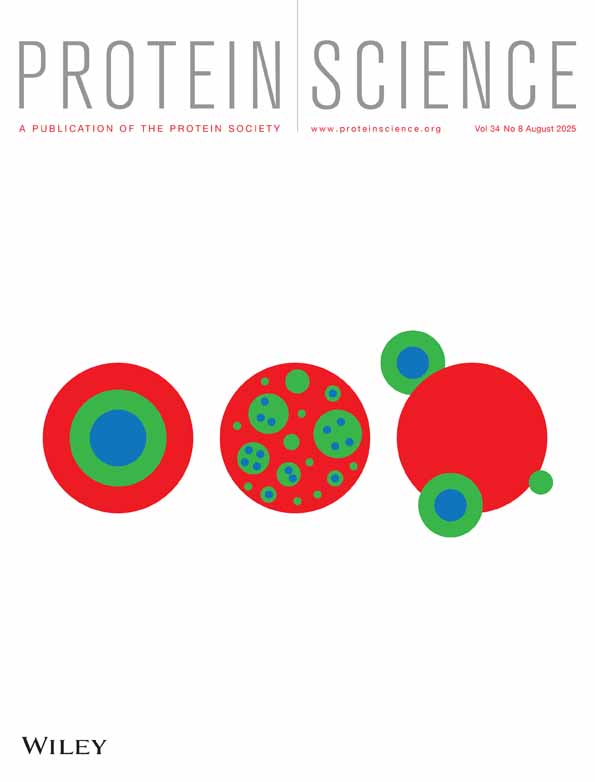Ligand-Induced conformational changes in the lactose permease of escherichia coli: Evidence for two binding sites
Abstract
By using a lactose permease mutant containing a single Cys residue in place of Val 331 (helix X), conformational changes induced by ligand binding were studied. With right-side-out membrane vesicles containing Val 331 → Cys permease, lactose transport is inactivated by either N-ethylmaleimide (NEM) or 7-diethylamino-3-(4′-maleimidylphenyl)-4-methylcoumarin (CPM). Remarkably, β,d-galactopyranosyl 1-thio-β,d-galactopyranoside (TDG) enhances the rate of inactivation by CPM, a hydrophobic sulfhydryl reagent, whereas NEM inactivation is attenuated by the ligand. Val 331 → Cys permease was then purified and studied in dodecyl-β,d-maltoside by site-directed fluorescence spectroscopy. The reactivity of Val 331 → Cys permease with 2-(4′-maleimidylanilino)-naphthalene-6-sulfonic acid (MIANS) is not changed over a low range of TDG concentrations (<0.8 mM), but the fluorescence of the MIANS-labeled protein is quenched in a saturable manner (apparent Kd ≌ 0.12 mM) without a change in emission maximum. In contrast, over a higher range of TDG concentrations (1–10 mM), the reactivity of Val 331 → Cys permease with MIANS is enhanced and the emission maximum of MIANS-labeled permease is blue shifted by 3–7 nm. Furthermore, the fluorescence of MIANS-labeled Val 331 → Cys permease is quenched by both acrylamide and iodide, but the former is considerably more effective. A low concentration of TDG (0.2 mM) does not alter quenching by either compound, whereas a higher concentration of ligand (10 mM) decreases the quenching constant for iodide by about 50% and for acrylamide by about 20%. Finally, the EPR spectrum of nitroxide spin-labeled Val 331 → Cys permease exhibits 2 components with different mobilities, and TDG causes the immobilized component to increase. The results provide evidence for the argument that lac permease has more than a single binding site. TDG binding to a higher affinity site quenches the fluorescence of MIANS-labeled Val 331 → Cys permease, and occupation of a second lower affinity site causes position 331 to become more accessible from a hydrophobic environment.




